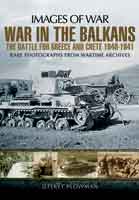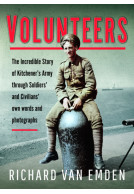Inchon Landing (ePub)
MacArthur's Korean War Masterstroke, September 1950
Imprint: Pen & Sword Military
Series: Cold War, 1945–1991
File Size: 4.1 MB (.epub)
Illustrations: 95
ISBN: 9781526756978
Published: 30th May 2019
| Other formats available | Price |
|---|---|
| Inchon Landing Paperback Add to Basket | £14.99 |
Inchon, a dramatic Cold War event: in the first two volumes in the author’s series on battles of the Korean War, North Korean ground forces, armour and artillery cross the 38th Parallel into South Korea, inflicting successive ignominious defeats on the ill-prepared US-led UN troops, pushing them ever southward into a tiny defensive enclave—the Pusan Perimeter—on the tip of the Korean Peninsula.
General Douglas MacArthur, Second World War veteran of the South East Asia and Pacific theatres, meets with considerable resistance to his plans for a counteroffensive, from both Washington and his staff in South Korea and Japan: it is typhoon season, the approaches to the South Korean port city of Inch’ŏn are not conducive to amphibious assault, and it will leave the besieged Pusan Perimeter in great danger of being overrun. However, the controversial MacArthur’s obstinate persistency prevails and, with a mere three weeks to go, the US X Corps is activated to execute the invasion on D-Day, 15 September 1950.
Elements of the US Marine Corps land successfully on the scheduled day, and with the element of surprise on their side, immediately strike east to Seoul, only 15 miles away. The next day, General Walker’s Eighth US Army breaks out of Pusan to complete the southerly envelopment of the North Korean forces. Seoul falls on the 25th. MacArthur’s impulsive gamble has paid off, and the South Korean government moves back to their capital. The North Koreans have been driven north of the 38th Parallel, effectively bringing to an end their invasion of the south that started on 25 June 1950.
Featured in 'short bursts' book section
Military Heritage, Fall 2020
As featured by
The Naval Review, November 2019
The Cold War series has become very popular because it tells the stories of very important events that are still under-told. The familiar format of lavish illustration with rare images is followed again, producing a vivid picture of what is arguably the greatest battle since World War II – Most Highly Recommended.
Firetrench
Read the full review here
I have not read the first two books of this series, so I cannot submit a direct comparison. My father fought in the Korean War and I wished that I had listened to his story, but unfortunately he passed away before I grew up enough to find out more. This book is well written and has many photographs to help tell the story. Korea has an uneasy peace between the North and South.
Armorama
Read the full review here
A really cool little book that is a great quick-read guide for the person who wants to dip a toe into serious military history- without too much commitment. Along the way, its a perfect little book for the Junior reader (although it's aimed a little older- a fine challenge for the kids), and the Gamer/Modeller/Military Enthusiast who might need to play , model, or just start to learn about this key campaign in the early Cold War "Hot War", 1950-1953 Korean Conflict. The book is packed with great B/W pics- with a really nice little Colour Plate Centre section as well.
GoodReads, Martin
Read the full review here
Another beautiful book that can't miss on the shelves of the military history buff!
Old Barbed Wire Blog
Read the full Italian review here
About Gerry van Tonder
Gerry van Tonder was born in Zimbabwe and came to Britain in 1999. He is a full-time historian and a published author. Specializing in military history, Gerry has authored Rhodesian Combined Forces Roll of Honour, 1966–1981; Book of Remembrance: Rhodesia Native Regiment and Rhodesian African Rifles; North of the Red Line (South African Defence Force’s border war), and the co-authored definitive Rhodesia Regiment, 1899–1981, a copy of which he presented to the regiment’s former colonel-in-chief, Her Majesty the Queen. Gerry has also written on British local history, including Derby in 50 Buildings, Chesterfield’s Military Heritage and Mansfield Through Time. He recently started with a series of Cold War titles and Echoes of the Coventry Blitz.
























